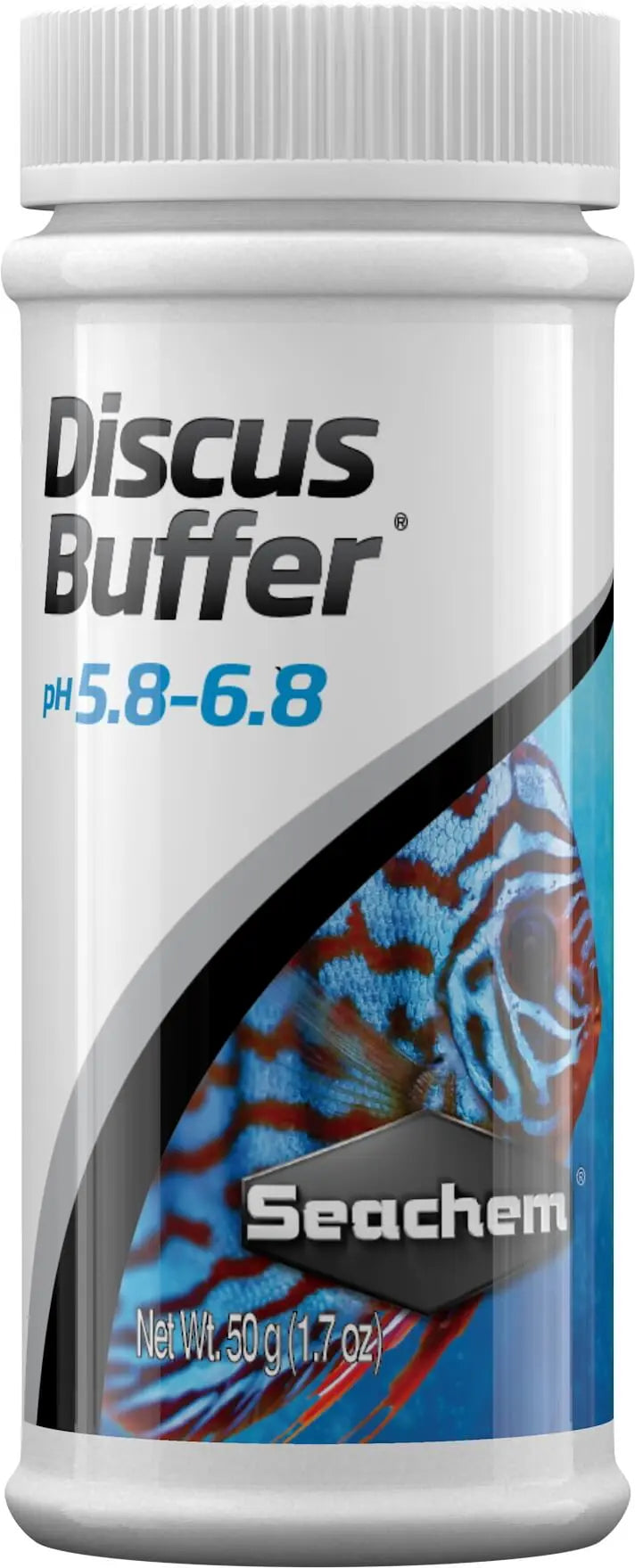Seachem Discus Buffer – 50 g Soft Water pH Conditioner for Discus & Tropical Fish
Seachem Discus Buffer – 50 g Soft Water pH Conditioner for Discus & Tropical Fish
Low stock: 2 left
Couldn't load pickup availability
Seachem Discus Buffer – 50 g Soft Water pH Conditioner for Discus & Tropical Fish
Seachem Discus Buffer (50 g) is a professional-grade pH conditioner formulated to safely lower and stabilize pH between 5.8 and 6.8, ideal for Discus and other soft-water tropical species. It gently softens water by converting carbonate hardness (KH) into available CO₂, promoting a stable, acidic environment that closely mimics the natural Amazon River habitat.
This phosphate-based formula enhances vitality, coloration, and spawning behavior in sensitive species like Discus, Angelfish, Apistogramma, and Cardinal Tetras. Use during water changes or routine maintenance to maintain consistent water chemistry.
💧 Key Features:
- Lowers and stabilizes pH between 5.8–6.8
- Ideal for Discus, Angelfish, and South American species
- Softens water by reducing carbonate hardness (KH)
- Helps replicate natural Amazon conditions
- Easy to dose and safe for all freshwater aquariums
📦 Product Details:
- Size: 50 g (treats up to 800 L / 200 gallons)
- Type: Freshwater pH conditioner
- Made by: Seachem Laboratories
💡 Directions for Use:
- Use 1 level teaspoon (about 6 g) for every 40–80 L (10–20 US gallons) daily until desired pH is reached.
- For best results, use with Seachem Acid Buffer or Neutral Regulator to fine-tune stability.
- Always test pH and hardness regularly.
Frequently Asked Questions (FAQ):
Q: What pH does Seachem Discus Buffer maintain?
A: It buffers between 5.8 and 6.8 depending on water chemistry and dosage.
Q: Is it safe for plants and shrimp?
A: Yes—safe for live plants, shrimp, and delicate fish when used as directed.
Q: How often should I use it?
A: Add during water changes or as needed to maintain stable pH levels.
Q: Can it be used with tap or RO water?
A: Works well with both; RO or soft water will give more consistent results.
Q: Does it contain phosphates?
A: Yes—it’s phosphate-based, which helps achieve stable buffering but may encourage algae if overused.

